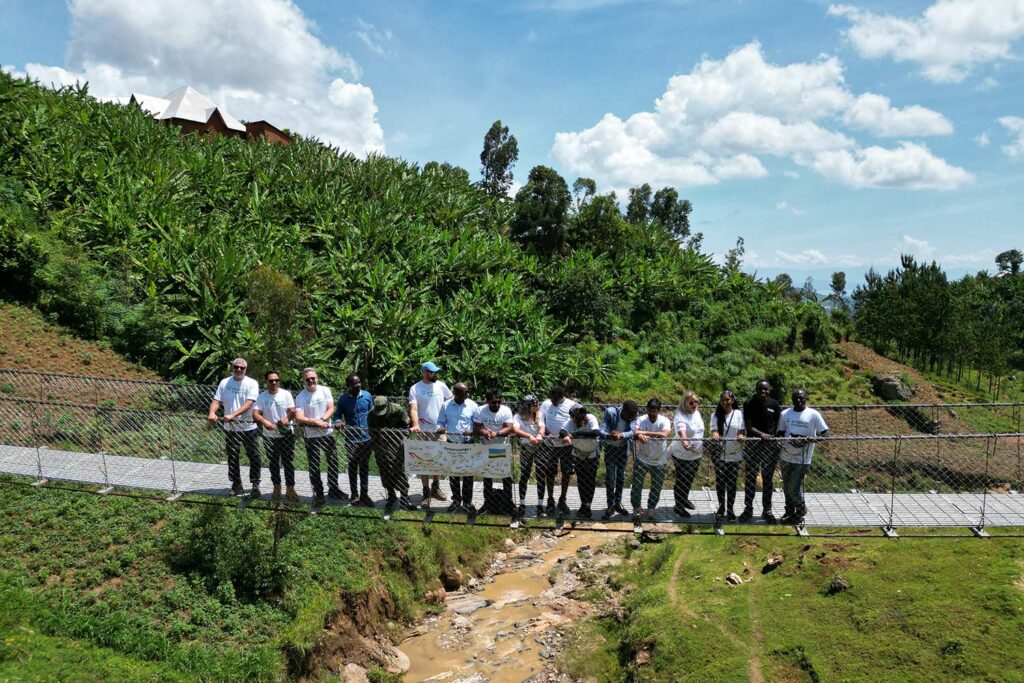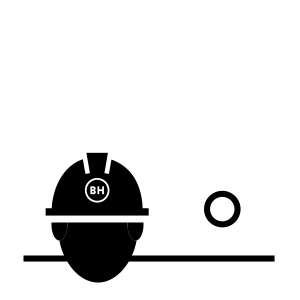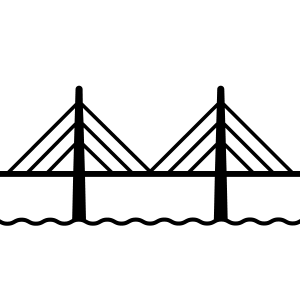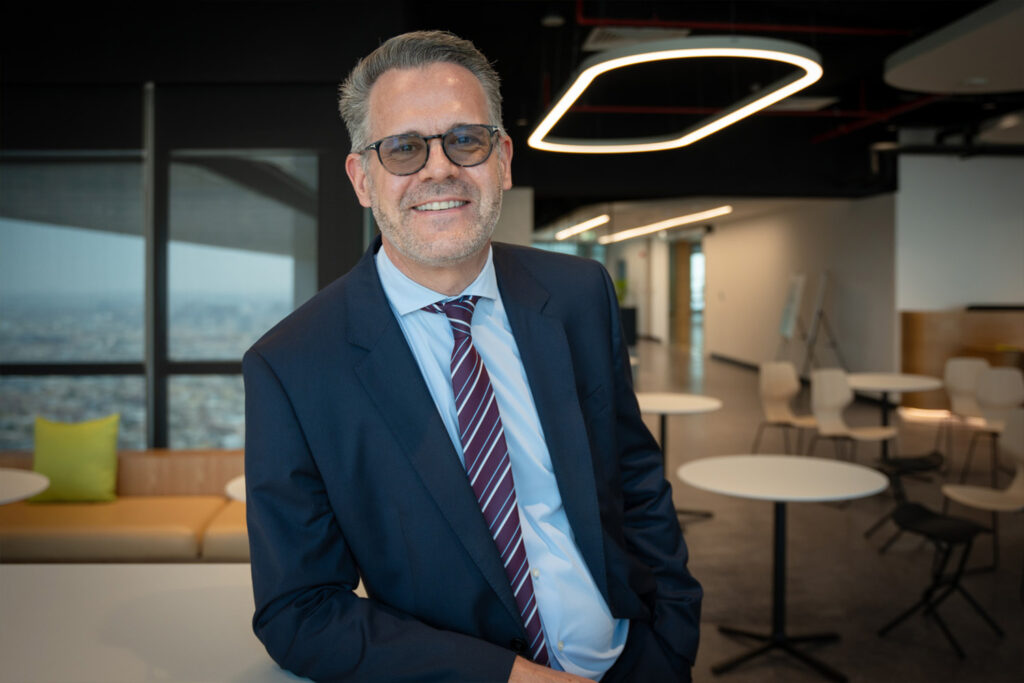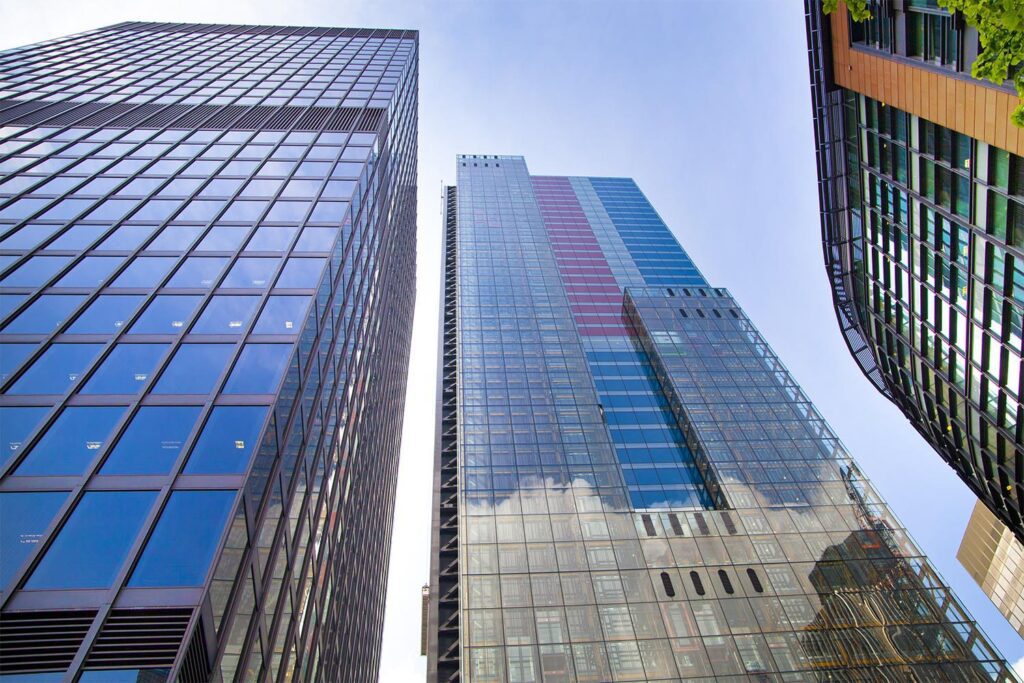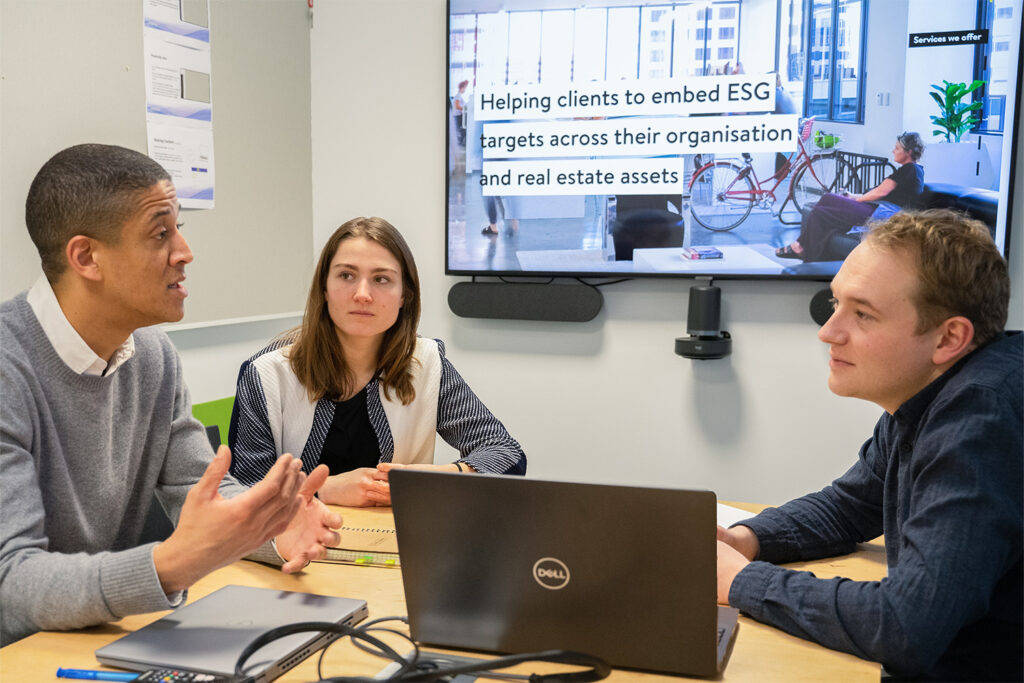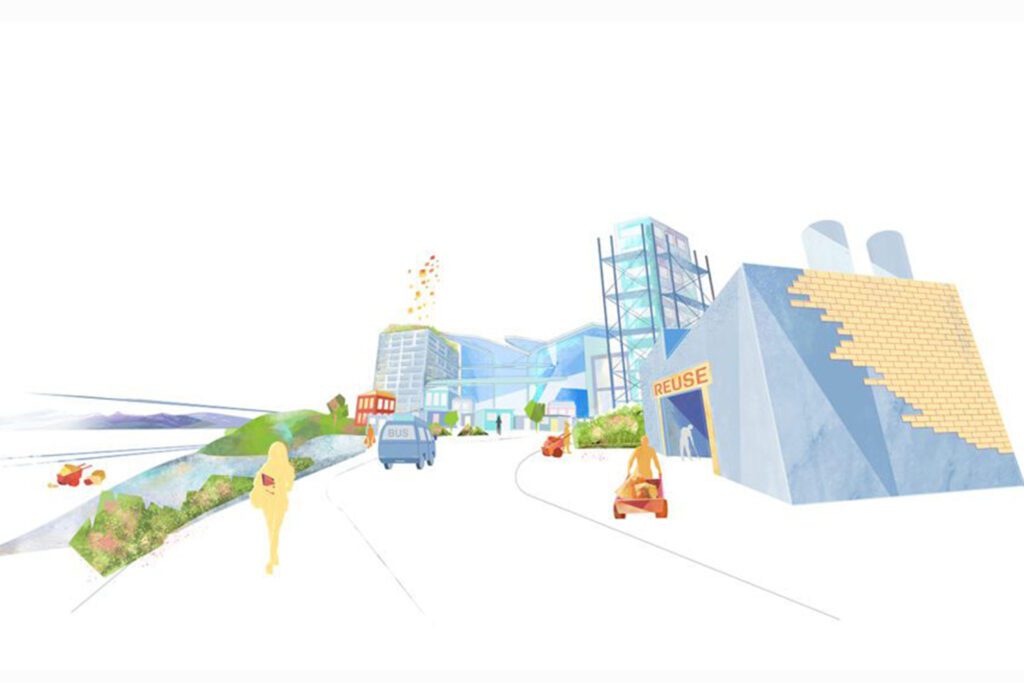
Bridges to Prosperity: Kanyarusanga
Kanyarusanga, Rwanda
Project details
Collaborator
Bridges to Prosperity / Gensler
Duration
2023
Services provided by Buro Happold
Bridge engineering and civil structures, Structural engineering
A new suspension bridge over the Gisuma river in Rwanda is transforming the lives of local people.
The structure, built by a team from Buro Happold, Gensler and Bridges to Prosperity (B2P), has generated a 30% increase in annual income for the villagers of Kanyarusanga, enabled safe access to school for 2,126 children, and allows 597 women each year to have access to a medical professional while giving birth.
Challenge
The village of Kanyarusanga is divided by the Gisuma river, which can become a raging torrent during the rainy season. For generations, members of the communities on both sides of the river used simple timber logs as makeshift bridges to cross the dangerous channel and gain access to essentials such as school, the health centre and the market.
Many people have lost their lives to the fast-flowing waters in recent years. Buro Happold has a rich heritage of encouraging its teams to devote their time and skills to community projects around the world that help to lift the equity and aspiration of some of the world’s poorest populations.
We have worked with the not-for-profit Bridges to Prosperity for a number of years, including supporting other bridge building missions to Rwanda, such as the projects to build bridges at Gatare in 2018, Gasiza in 2016 and Rubete Trail Bridge in 2022.
For the Kanyarusanga project, a team of engineers and experts from our Middle East offices worked on the project as part of the company’s Share Our Skills initiative, a scheme that allows individuals to give their time to worthwhile projects without charge. We invited a team from architect Gensler to collaborate on the new bridge, and both Buro Happold and Gensler sponsored the cost of the project.
The Buro Happold team comprised Ian Redmayne, John Vita, Bianca Decarli, Nandan Tavkar) and Tasneem Zedan. The team from Gensler’s Dubai and Abu Dhabi offices included Sophie Mockett, Alan Crystal, Pari Sanghavi, Ryan Waltke and Jithu Matthews.
The combined team worked together with 20 people from the local village, as well as a site manager and site engineer from B2P. The remote village is a six-hour drive from Kigali, and an hour’s drive off the nearest tarmac road. As a consequence, access to construction machinery is limited, so all of the bridge-building work had to be done by hand.

Solution
The construction of the 72m bridge began with the team manually pulling steel cables across the valley and anchoring them to the abutments that were already in place. The charity recycles and reuses steel cables from ships to create its robust cable suspension bridges.
Once the cables were in place, the team had to install the cross beams and then the deck. Every cross beam had four bolts to fix them to the deck cables and every deck plank had eight bolts to fix them to the cross beams. Every bolt had to be tightened by hand to a required torque, making this an intensely time-consuming process. All of this had to be completed while wearing a safety harness at a height of 11m above the river.
Once the deck was in place, the team then had to fix the wire safety netting to the sides and bend the steel hangers around the handrail cable – again all by hand – before backfilling the abutments, hand carrying boulders, and placing a concrete slab over the backfill.
While building, the teams from Buro Happold, Gensler and B2P worked closely alongside 20 members of the local community, to pass on their skills and empower the villagers to be able to maintain the bridge in the coming years. At the end of the two-week build, 10 local people were chosen to act as long-term custodians of the bridge.

Value
Named Kanyarusanga1, the new trail bridge now serves two communities with more than 5,700 beneficiaries in the rural Karongi District. It will save lives and allow local people to safely seek opportunities and services on the other side of the river.
The bridge connects the communities to the nearest hospital, government services, markets, and both primary and secondary schools – enabling safe access to school for 2,126 children, and allowing 597 women each year to have access to a medical professional while giving birth. It is also expected to generate a 30% increase in annual income for the villagers of Kanyarusanga.
